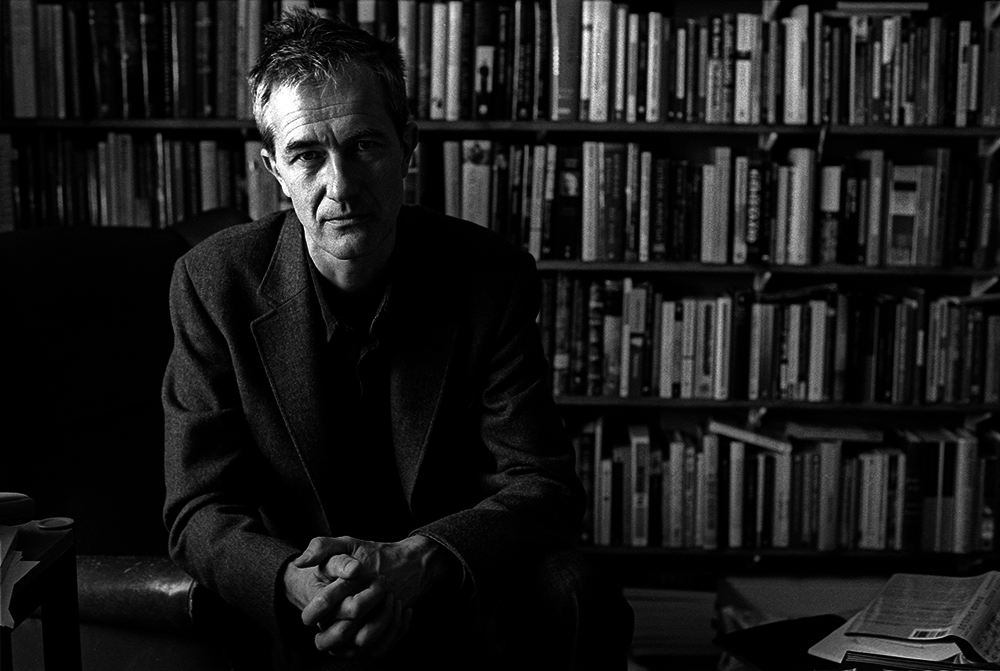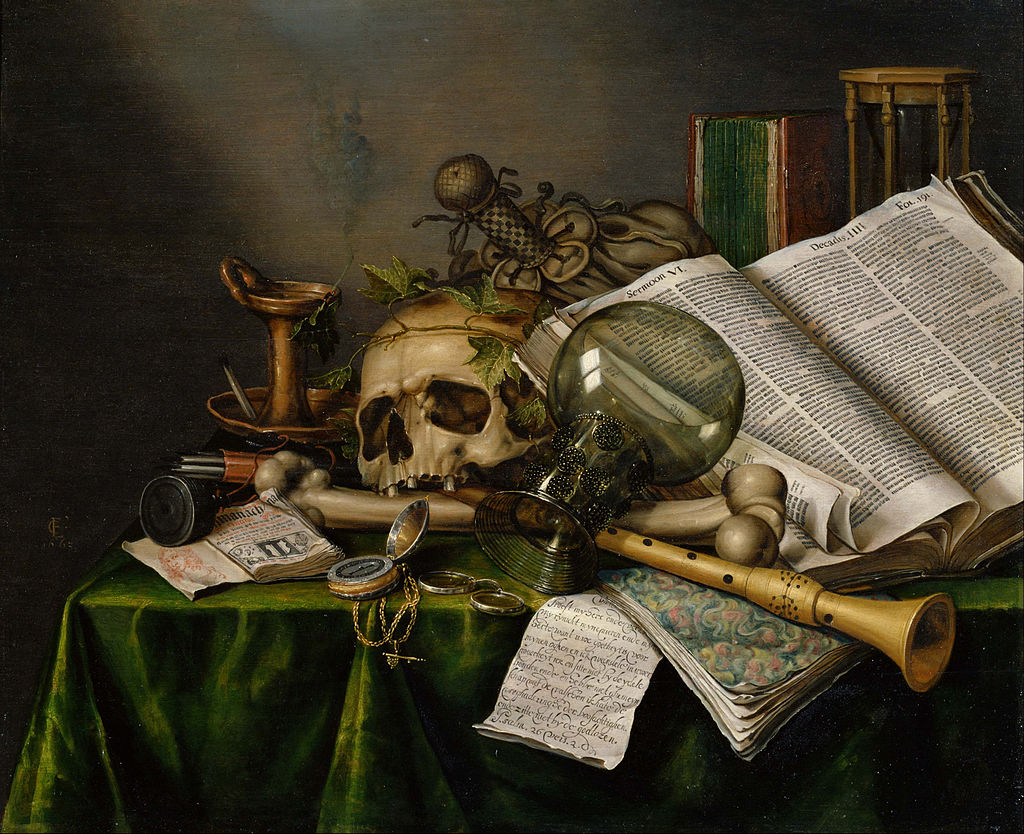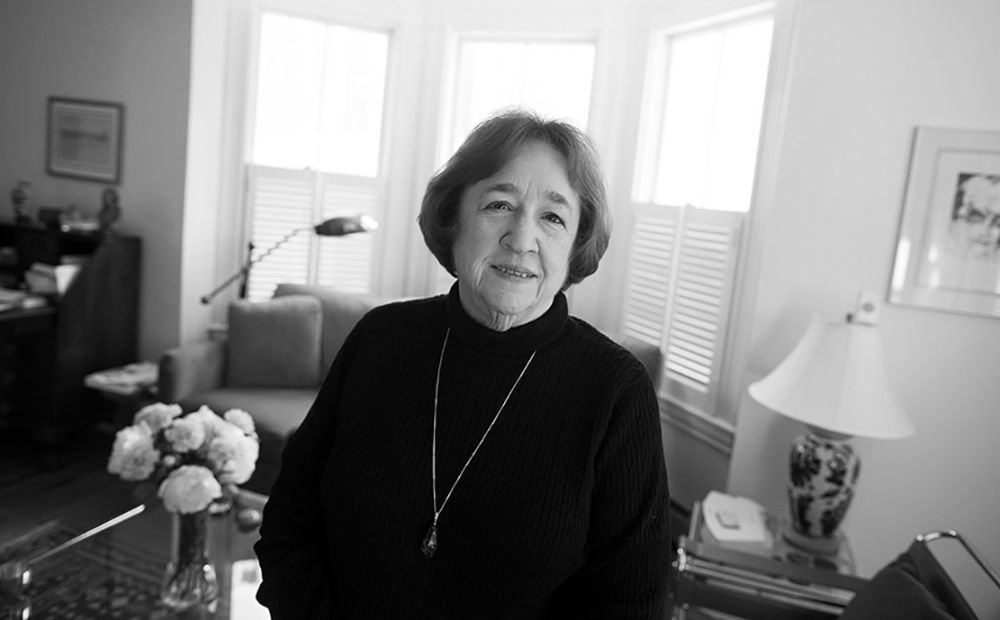Issue 207, Winter 2013

Photo by Lawrence Impey, courtesy of Graywolf Press
Born in Cheltenham in 1958, educated at Oxford, Geoff Dyer considers his upbringing “archetypal, in a way,” and himself “a beneficiary of opportunities that were put in place by Labour governments after the Second World War.” His father was a sheet-metal worker, his mother worked in a school canteen, and in a relentlessly casual manner that will be familiar to the readers of his books, Dyer remarked to me of his education that “in this entirely passive way, all I did was keep passing exams from eleven onwards.” Such a relaxed account, of course, does nothing to explain the singular restlessness of Dyer’s writing, its ranginess of subject, its comic energy, or its sheer volume.
Dyer’s first book, Ways of Telling, a study of the English writer John Berger, was published in 1986. It was followed by a novel, The Colour of Memory (1989), and then But Beautiful(1991), a series of—short stories? essays?—about jazz that effectively began the sort of genre demolition for which Dyer is now well-known. Since then he has published three books that are classified as novels—The Search (1993), Paris Trance (1998), and Jeff in Venice, Death in Varanasi (2009)—and eight that are not. These latter include The Missing of the Somme(1994), a meditation on World War I; Out of Sheer Rage: In the Shadow of D. H. Lawrence(1997), a work of literary criticism; Yoga for People Who Can’t Be Bothered to Do It (2003), a collection of travel essays; The Ongoing Moment (2005), a book on photography; and Zona: A Book About a Film About a Journey to a Room (2012), a work of film criticism. But none of these taxonomies is quite satisfactory. Dyer’s novels will often pause the action to ponder decidedly non- fictional questions; his nonfiction will digress cheerfully and at will, from its declared topic, often veering sharply into the personal.
Our first meeting took place last winter in Iowa City, where Dyer was a visiting professor in the University of Iowa’s nonfiction-writing program. We spent mornings talking in a spare, detached office behind the house that Dyer had rented, breaking frequently for doughnuts, coffee, and lunch. In the evenings we met for dinners, a screening of Leos Carax’s film Holy Motors, and beers in Iowa City’s two great bars, Foxhead and George’s. Dyer’s wife, the gallerist Rebecca Wilson, was visiting from London, and she joined us for many of these outings. Subsequent meetings took place in Los Angeles and London.
In person, Dyer is gracious, funny, and tall. A warm and forthcoming subject, he occasionally looped back to a previous topic, making sure we had covered it thoroughly enough, a habit that—again—will come as no surprise to his readers.
—Matthew Specktor
INTERVIEWER
The first thing I’d like—
DYER
Excuse me for interrupting, but—at the risk of sounding like some war criminal in the Hague who refuses to acknowledge the legitimacy of the court in which he’s being tried—I have to object to the parameters of this interview.
INTERVIEWER
On what grounds?
DYER
It’s titled “The Art of Nonfiction.” Now I could whine, “What about the fiction?” but that would be to accept a distinction that’s not sustainable. Fiction, nonfiction—the two are bleeding into each other all the time.
INTERVIEWER
You don’t distinguish between them at all?
DYER
I don’t think a reasonable assessment of what I’ve been up to in the last however many years is possible if one accepts segregation. That refusal is part of what the books are about. I think of all of them as, um, what’s the word? Ah, yes, books. I haven’t subjected it to scientific analysis, but if you look at the proportion of made-up stuff in the so-called novels versus the proportion of made-up stuff in the others, I would expect they’re pretty much the same. For example, I was doing a reading the other day where I read a bit from Out of Sheer Rage—it all sounds a bit meta!—about giving a lecture in Denmark.
INTERVIEWER
The part where you claim to show up sick and unprepared?
DYER
Yes. That part is completely invented. My motto is always, “If you’re not overprepared you’re underprepared.” I’m a grammar-school boy, I do my homework. Likewise, in the fiction, so much of the stuff is drawn from real life. But that’s not the point really. The point is that the techniques are pretty much the same in fiction and nonfiction. It’s not like Susan Sontag, where there’s an easily recognizable division between the two. Sontag was always saying, Why don’t you adequately acknowledge the greatness of my fiction? Well, there are several possible responses to that, but the important thing is that she accepted a separation that I reject. It’s just a bunch of books. To go back to your earlier question, I think the distinction between fiction and nonfiction is less about “Did it really happen or was it made up?” than it is about form. And, more than form, it’s about the expectations that are brought to certain forms. According to how a book is presented, packaged, or identified, readers have certain expectations. Following from that they expect books within broadly identified categories to behave in certain ways. So people can find it quite disconcerting when a book isn’t doing what they think it’s meant to be doing, even if the book is completely fine on its own terms and has no desire to conform to some external set of expectations. My books are often disappointing in that regard. Maybe in other ways, too, but I am mercifully and necessarily oblivious on that score.
INTERVIEWER
Yet certain of your books are more explicitly classified as novels. Paris Trance and Jeff in Venice, Death in Varanasi—they frame themselves as such in a way that, say. Zona and But Beautiful do not. Do you find one form more congenial than the other?
DYER
Nope, neither as reader nor writer. Though fiction does seem to bring one up against one’s absolute limits as a writer in quite interesting ways. My range as a writer, overall, is unusually broad. As a fiction writer it’s spectacularly limited. Group of friends, boy meets girl—that’s about it. But it’s of high quality, I maintain, rather Sontagishly.
INTERVIEWER
What about creative nonfiction?
DYER
David Hare said that the two most depressing words in the English language are literary fiction. I couldn’t agree more. But we might soon have to add that the two most depressing words in the American language are creative nonfiction. If creative nonfiction means stuff like that Sheila Heti book, then give me straight-down-the-line, non-creative history books any day. I’m not interested in creative nonfiction, and I’m not interested in literary fiction. I’m interested in great books—which come in different shapes and forms now, many more than were previously admitted. My objection is to people in the novelists’ camp with their unquestioned assumption that the novel, irrespective of the quality of a given instance of it, is somehow superior.




